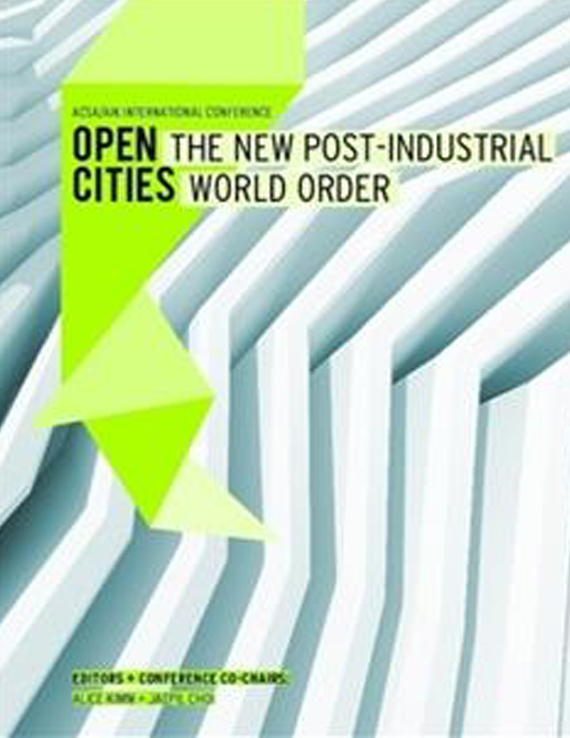Author(s): Yisheng Yang
“Ecology can be a generating force, a structuring agency of city environment andurbanity…” (Reed, 2010:328). For Kaohsiung, the primary industrial and the portcity in Taiwan, the notion of water ecologies and hydraulic adaptation becomethe impetus for requalifying urban space as the city is challenged with economicrepositioning and environmental degradation since the 1990s. Neo-liberal urbandevelopment paradigm sprawls across city boundary with road-based urbanizationthreatening historical water-woven urban fabric and landscape ecologies ofits hinterland. Recent developments of stronger climatic variations in floods anddroughts also compound the vulnerability of the (peri-)urban environment. As thecity is politically embracing a post-industrial transformation, a new spatial paradigmthat seeks alternative adaptation to changing water and urbanization regimeis called for.The Caogong Canal irrigation system built during the era Mandarin feudalism was theresponsive indigenous water practice that bound physically and culturally with theformation of early settlements and productive landscape. It linked with coastal riversand urban center at downstream and became the major connective tissue of the cityand its hinterland. After 50s, the progressive industrialization and its associated adhoccity plans catalyzed by population and real estate speculation spread universalurban blocks. Water(way) is constricted, enclosed, or filled to maximize the developableplots, resulting fragmented flow and yet another flood-prone urban district.Reflecting upon water urbanism, it postulates water structure has capacity to hostpart of city/territory spatial configuration (Shannon & De Meulder, 2013:14), thecase study premises the Caogong Canal system to be a defining infrastructure thatcould reframe new urban question in shifting water regimes and requalify spatialparadigms of post-industrial Kaohsiung. This paper adopts layered mapping to revealthe inherent logics of Caogong Canal water system in multi-scalar contexts andexplore latent capacities for adapting new urban paradigm. Ba Gua Liao, a ‘specialplan district’ overlapping end branches of Caogong Canal at city edge, is explored foradaptation strategies in context of the new water-based urbanism.The approach of mapping derived from ‘descriptive urbanism’ evolves to include aspectrum of analytical, interpretive and speculative processing of a complex urbanterritory (Shannon, 2008:105-111), or in this case, the interrelationships betweenwater (Caogong Canal system) and changing urbanisms from agricultural to postindustrialsociety. In terms of adaptation strategies, the spatial planning assumes hybridecologies as “responsive design systems that simultaneously tap into ecological,engineering and social dynamics with linkage to large-scale environmental changeslike rainfall and drought” (Reed, 2010:328). In this rationale, Caogong Canal as indigenouswater system is the hybrid infrastructure that re-embeds itself to new spatialregime in pursuit of cultural identity and ecological sustainability of post-industrialKaohsiung.1. Reed, C. (2010). The Agency of Ecology, in Ecological Urbanism by Mostafavi, M. &Doherty, G. (eds.). Lars Muller Publishers, Zurich2. Shannon, K. (2008). The ‘Agency of Mapping’ in South Asia: Galle-Matara (Sri Lanka),Mumbai (India) and Khulna (Bangladesh), Footprint 2: 105-119.
Volume Editors
Alice Kimm & Jaepil Choi
ISBN
978-0-935502-91-6

 Study Architecture
Study Architecture  ProPEL
ProPEL 
